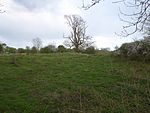Collyweston Quarries
Sites of Special Scientific Interest in Northamptonshire

Collyweston Quarries is a 6.6-hectare (16-acre) biological Site of Special Scientific Interest in Easton on the Hill in Northamptonshire, south of Stamford. It is managed by the Wildlife Trust for Bedfordshire, Cambridgeshire and Northamptonshire.This former limestone quarry is now rough grassland on Jurassic limestone. The flora is diverse, and more than a hundred flowering plants have been recorded, including wild thyme, dropwort, dyer's greenweed and clustered bellflower. There is a substantial butterfly population.There is access from a footpath adjacent to a house called Deep Side on Stamford Road.
Excerpt from the Wikipedia article Collyweston Quarries (License: CC BY-SA 3.0, Authors, Images).Collyweston Quarries
path through quarry,
Geographical coordinates (GPS) Address Nearby Places Show on map
Geographical coordinates (GPS)
| Latitude | Longitude |
|---|---|
| N 52.623 ° | E -0.519 ° |
Address
path through quarry
path through quarry
PE9 3PF , Collyweston
England, United Kingdom
Open on Google Maps










